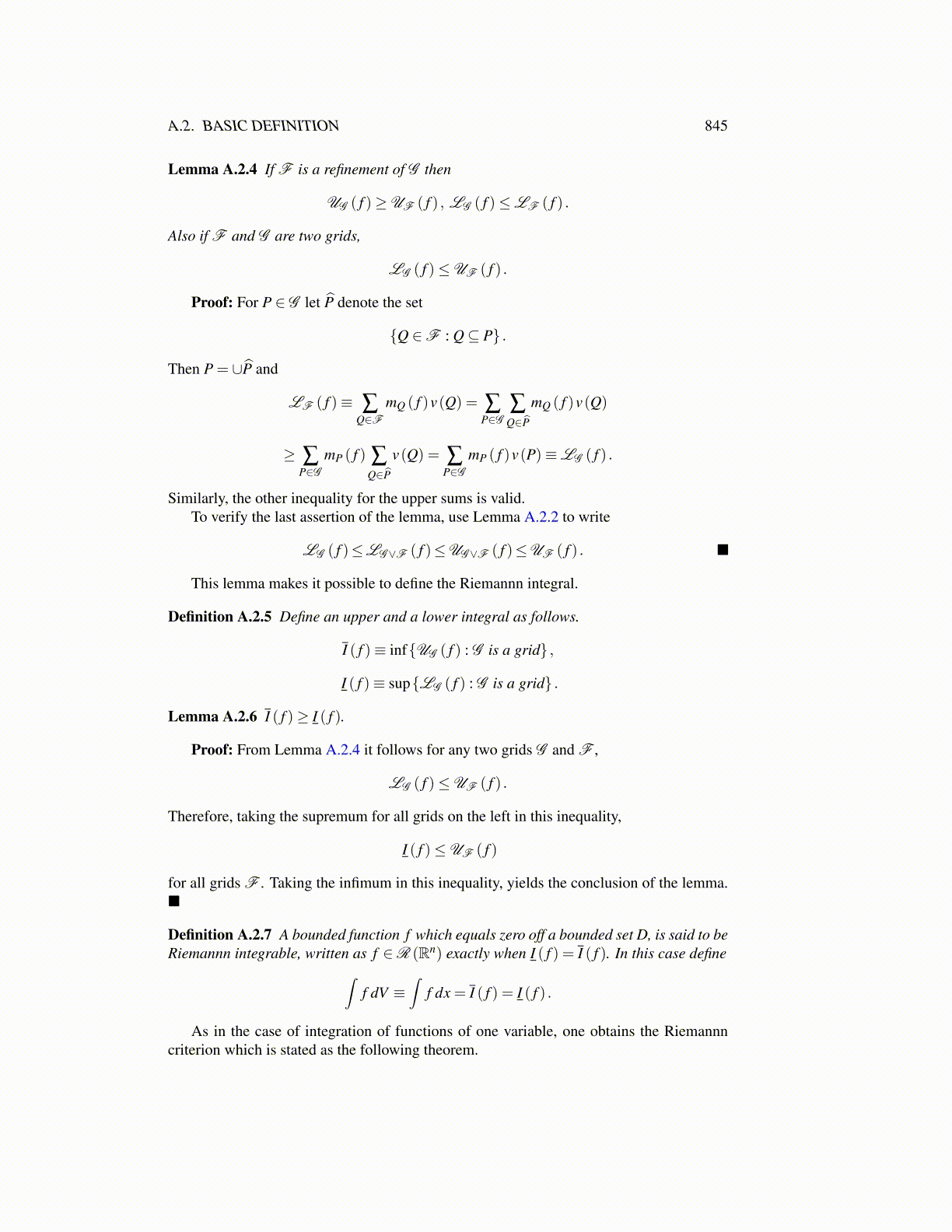
A.2. BASIC DEFINITION 845
Lemma A.2.4 If F is a refinement of G then
UG ( f )≥UF ( f ) , LG ( f )≤LF ( f ) .
Also if F and G are two grids,
LG ( f )≤UF ( f ) .
Proof: For P ∈ G let P̂ denote the set
{Q ∈F : Q⊆ P} .
Then P = ∪P̂ and
LF ( f )≡ ∑Q∈F
mQ ( f )v(Q) = ∑P∈G
∑Q∈P̂
mQ ( f )v(Q)
≥ ∑P∈G
mP ( f ) ∑Q∈P̂
v(Q) = ∑P∈G
mP ( f )v(P)≡LG ( f ) .
Similarly, the other inequality for the upper sums is valid.To verify the last assertion of the lemma, use Lemma A.2.2 to write
LG ( f )≤LG∨F ( f )≤UG∨F ( f )≤UF ( f ) . ■
This lemma makes it possible to define the Riemannn integral.
Definition A.2.5 Define an upper and a lower integral as follows.
I ( f )≡ inf{UG ( f ) : G is a grid} ,
I ( f )≡ sup{LG ( f ) : G is a grid} .
Lemma A.2.6 I ( f )≥ I ( f ).
Proof: From Lemma A.2.4 it follows for any two grids G and F ,
LG ( f )≤UF ( f ) .
Therefore, taking the supremum for all grids on the left in this inequality,
I ( f )≤UF ( f )
for all grids F . Taking the infimum in this inequality, yields the conclusion of the lemma.■
Definition A.2.7 A bounded function f which equals zero off a bounded set D, is said to beRiemannn integrable, written as f ∈R (Rn) exactly when I ( f ) = I ( f ). In this case define∫
f dV ≡∫
f dx = I ( f ) = I ( f ) .
As in the case of integration of functions of one variable, one obtains the Riemannncriterion which is stated as the following theorem.